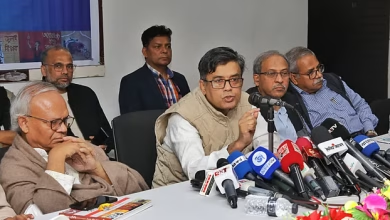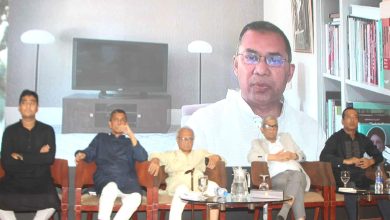Road to economic freedom: Ways to become a trillion-dollar economy
Bangladesh’s journey towards economic freedom since its traumatic birth has been quite impressive. However, it must remain focused on necessary policy reforms to make the country fully achieve aspirational growth and inclusive development with enough social justice

Aspiration for economic freedom was certainly at the core of the struggle for the liberation of Bangladesh. This aspiration was, in fact, germinated during the episodes of the struggle for freedom as envisioned by the father of the nation and his co-leaders, right from the early days of Pakistan.
He initiated a new course of political journey first by involving himself and his contemporary student leaders in the Language Movement. Then, he transitioned to a mainstream opposition political movement under the guise of a new political party called the Awami Muslim League, which eventually was renamed the Awami League. Bangabandhu Sheikh Mujibur Rahman eventually became not only the top leader of this party, but also the unchallenged national leader of East Bengal.
When Pakistan’s central elites denied his electoral victory in 1970, he opted for an all-out war of liberation in 1971. The war ended in victory for Bengalis, and independent Bangladesh was achieved.
While there are genuine possibilities ahead of Bangladesh, to realise those, the country needs to overcome daunting challenges that have intensified further in recent years (first due to the pandemic and then the Russo-Ukrainian war). Bangladesh still has almost 32 million people living below the national poverty line. While safety nets and other programmes are essential for their graduation, they alone are insufficient.
After independence, Bangabandhu started his heroic journey of rebuilding Bangladesh in line with the core aspirations of the freedom-loving people. This journey started convincingly to mobilise financial and social capital to implement the goals of a planned development that was equal, participatory and aimed at inclusive prosperity.
The first five-year plan prioritised agriculture as a driver of growth in addition to industrial growth. The journey, however, was suddenly cut short after a group of traitors killed Bangabandhu. This was followed by a prolonged slowdown in the economy for many years. Thanks to the democratic transition in the 1990s, the economy finally picked up, with a significant impact on development.
Bangladesh’s gains in inclusive development are perhaps best reflected in its achievements in terms of poverty reduction. Between 2010 and 2022, our poverty rate decreased from 31.5% to 18.7% (HIES 2022). The extreme poverty rate declined from 17.6% to 5.6%. In the beginning, led by Bangabandhu, Bangladesh started its fantastic journey of macroeconomic transformation.
Consequently, within less than four years, the per capita income rose by 163% (from $99 to $260). As indicated, after losing Bangabandhu, the country went off track, and consequently, the per capita income rose by only 52% (to $395) in the following 22 years. The final ‘quantum jump’ of macroeconomic growth started in 2008–09 when Prime Minister Sheikh Hasina took the helm of the country for the second time.
Our per capita income was $699 in 2010. By 2022, it had almost quadrupled to $2,688. More importantly, average monthly household expenditure rose from Tk11,200 in 2010 to Tk31,500 in 2022.
While both the income and consumption Gini ratios also increased slightly during this period, our gains in terms of human development indicators point towards the inclusive nature of the growth, particularly in terms of consumption, which has a significant impact on social development indicators.
For example, the average life span has increased from 65.2 years in 2005 to 73 years today. Infant mortality has been reduced from 51 to 22 per thousand between 2005 and 2023. The maternal mortality rate decreased from 376 to 123 per one hundred thousand during the same period. Between 2010 and 2022, the overall literacy rate increased from 58% to 74%. Only 42.49 % of households had access to electricity in 2010; today, almost all (99.14 %) households have access to electricity. All these point towards significant improvements in terms of ‘quality of life’ for all.
The industrial sector’s share in GDP, rising from 22% in 2010 to 37% in 2022, is another indicator of Bangladesh’s macroeconomic maturity. While the share of agriculture in the GDP has been consistently declining, agricultural production has been increasing, providing employment opportunities to more than 40% of the working population. While agricultural growth has been safeguarding the economy, growth in remittances and exports has been fueling the quantum jump of the macroeconomy.
Between 2009 and 2023, Bangladesh received remittances worth $233 billion (the country now receives over $20 billion in remittances annually). Bangladesh’s export earnings have exceeded the $50 billion mark for the second consecutive year in FY 2022-23. It is likely to be $57 billion this fiscal year.
Simultaneously, households have become financially secure, and businesses have become more financially active due to the digital financial inclusion revolution that has taken place over the last 10-15 years.
Bangladesh has a younger population, with a median age of 26.7 years (28.1 years for India and 37.4 years for China). Currently, 11% of the population has tertiary degrees. The ratio is set to be almost triple (32%) by 2026. Consequently, their average gross pay is also likely to hike accordingly (from less than Tk25,000 currently to over Tk30,000 by 2026). This demographic dividend can be further enhanced if we can address the skill gaps.
The transformational infrastructure overhaul that has taken place over the last 8–10 years will also contribute towards pacing up economic activities in the country. The country is expected to increase its power generation capacity by almost 57% between 2021 and 2026. With all major development projects nearing completion by 2026, Bangladesh will see a significant uplift in economic activity, with each project adding close to 1.2% of GDP per annum.
Bangladesh’s recent growth has been driven by consumption, contributing around 70%. Based on BBS and World Bank data, CAL Research has projected that Bangladesh’s consumption will likely grow by another 12% by 2026. It is projected that by 2030, Bangladesh will become the ninth largest consumer economy, with 34 million citizens belonging to the middle and affluent class.
This promising consumer base is most likely to attract investors from both home and abroad. To this end, the country-wide economic zones (100) will unlock untapped potential. Economic zones will provide a manufacturing base of $40 billion in exports by 2026.
Along with RMG, other sectors will further emerge to boost Bangladesh’s export earnings. Our ICT sector has grown by 40% annually since 2010. The IT industry is expected to grow by two and a half times by 2026 and reach $5 billion.
This seems incredibly likely, given that Bangladesh is already home to 0.65 million IT freelancers (15% of the global total). Light engineering, as a sector, is expected to grow at a 15% CAGR over the next five years. Pharmaceuticals are expected to have an even higher (19%) CAGR during the same period.
While there are genuine possibilities ahead of Bangladesh, to realise those, the country needs to overcome daunting challenges that have intensified further in recent years (first due to the pandemic and then the Russo-Ukrainian war). Bangladesh still has almost 32 million people living below the national poverty line. While safety nets and other programmes are essential for their graduation, they alone are insufficient. We need to provide them with work opportunities to improve their economic conditions.
Only 200,000 jobs are created annually in the formal sector, whereas 2 million youth enter the job market annually. Skilling and re-skilling the workforce are a must. Further emphasis on technical education is required. Despite commendable achievements, enrollment in educational institutions remains around 17% (with about one-fourth being women).
A recent nationwide youth survey by BYLC has revealed that 41% of the youth identify ‘digital literacy’ as the second most significant challenge for our education system (the most significant challenge has been identified to be teacher quality).
With a 25% share of the GDP and 30% of the employed workforce, MSMEs of Bangladesh hold enormous potential as job creators. Yet, MSMEs face structural bottlenecks such as access to finance, infrastructural barriers, and technological shortcomings. Improving the business climate is also necessary to create a growing population of jobs.
Bangladesh has improved its business climate significantly by streamlining regulatory requirements and automation/digitisation (e.g., the days required for business registration have decreased from 56.5 days in 2009 to just two days in 2020). Yet, prevailing informality remains a challenge for investors in Bangladesh (only 61.4% of firms are registered).
Bangladesh is vulnerable to both disasters and climate change and is ranked the seventh most disaster-prone country in the world, as per the Global Climate Risk Index 2021 report. However, the country has enormous potential for climate adaptive development (e.g., 8.1 million litres of diesel used for irrigation annually). (SIPs could be a sustainable alternative.)
The BYLC survey mentioned earlier has shown that 80% of our youth perceive corruption as a critical impeding factor to Bangladesh’s development. Lack of suitable employment is perceived to be a major macroeconomic challenge by a significant share of our youth (67%). Therefore, we must take a planned approach to address issues such as corruption, unemployment, and economic uncertainties to ensure our youth remain optimistic about the country.
Bangladesh has the potential of becoming a trillion-dollar economy with a moderate growth rate of 5% by 2040. With a double-digit growth rate, it could become even faster (by 2030). With a growth rate between the two said ratios, it is most likely to be achieved by 2035.
Undoubtedly, Bangladesh’s journey towards economic freedom since its traumatic birth has been quite impressive. It could have done better if it had avoided the governance and skill deficits. Hence, it must remain focused on necessary policy reforms to make the country fully achieve aspirational growth and inclusive development with enough social justice.






